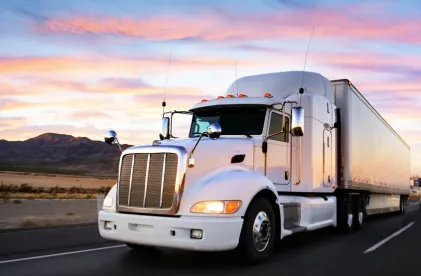Last year, the Washington Supreme Court considered the following certified question: “Does the Washington Minimum Wage Act require non-agricultural employers to pay their piece-rate employees per hour for time spent performing activities outside of piece-rate work?” On September 5, 2019, the court answered with a resounding no.
The case, Sampson v. Knight Transportation, Inc., was one of several in which the U.S. District Court for the Western District of Washington considered whether flat-fee and other accessorial payments were sufficient to fully compensate truck drivers for inspection, tarping, layover, and other nondriving duties performed by most every interstate truck driver. The district court sought clarification on the issue from the highest court in the State of Washington.
The Washington Supreme Court held that under Washington Administrative Code Section 296-126-021, nonagricultural employers comply with the Minimum Wage Act’s guaranty that employees receive a minimum wage for each hour worked if they ensure that total wages for each week do not fall below the statutory minimum wage rate for each hour worked. So long as nonagricultural employers meet this pay minimum, they are not required to pay piece-rate employees on a separate hourly basis for time spent performing activities outside the piecework.
A brief history of this issue demonstrates the magnitude of the decision. In 2015, the Washington Supreme Court ruled for the first time that agricultural employers were required to compensate piece-rate workers in Washington State separately and on an hourly basis for rest breaks. Three years later, the court ruled that the same piece-rate agricultural workers were required to be paid separately and on an hourly basis for all nonproduction work.
In each of those decisions, the court rejected the agricultural employers’ assertion that piece-rate compensation (i.e., payment by the basket or bushel) was intended also to pay for rest breaks and nonproductive activities such as cleaning and hauling harvesting tools and ladders. The decisions demanded immediate changes to established compensation practices for agricultural workers that had long been approved by Washington State’s Department of Labor and Industries. These compensation practices were based, in large part, on a state industrial welfare regulation that was expressly directed at agricultural workers.
In the wake of the decisions, a class-action litigation assault on the trucking industry in Washington ensued; several plaintiff-side class-action firms sued virtually every trucking company with piece-rate compensated drivers in the state. In each of the cases, plaintiff-side class-action attorneys argued that the court should apply the same compensation principles to piece-rate compensated truck drivers that applied to piece-rate compensated agricultural workers. The drivers, they argued, should therefore be paid on a separate hourly basis for rest breaks and all nonproductive time—specifically, all on-duty time when the wheels were not turning on the drivers’ assigned trucks.
In the last several years, a handful of plaintiff-side class-action firms leveraged the Washington Supreme Court’s decisions on agricultural workers to extract hundreds of thousands of dollars in class settlements from dozens of trucking companies while state and federal trial courts wrestled with whether interstate drivers were to be paid separately and on an hourly basis for all work performed when the trucks’ wheels were not turning. With the court’s recent decision in Sampson v. Knight Transportation, Inc., this issue is now a matter of settled law and such claims have no merit.





 />i
/>i
